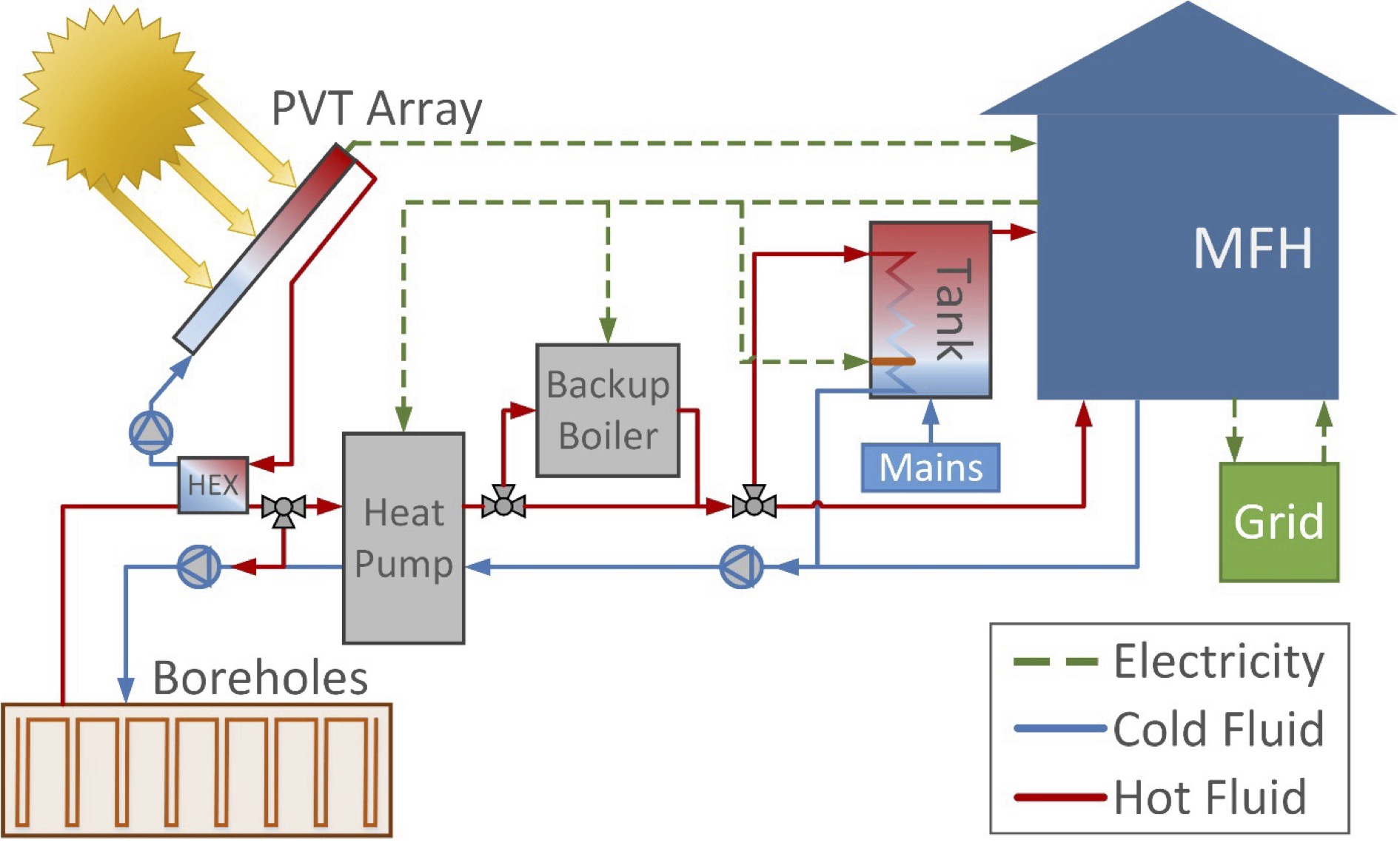Solar energy and ground source heat pumps for Swedish multi-family housing (completed)
Ground source heat pumps (GSHP) have a relatively small market share in multi-family houses in part due to the limited land space available for drilling. The rapidly growing market for solar photovoltaics (PV) provides an opportunity for GSHP by acting as a secondary heat source and regenerating the ground via a heat exchanger fixed to the rear of the panel. The hybrid PV/thermal collectors, called PVT, have higher efficiencies than PV only, but also come with a significant additional cost.

Funded by: The Swedish Energy Agency (Energimyndigheten) under the Effsys Expand program (project number 40936-1)
Time period: January 2016 – June 2018
Project partners:
- KTH Energy Technology
- Danfoss / Thermia Heat Pumps
- Bengt Dahlgren Stockholm Geo
- Solhybrid i Småland
- Skånska Energilösningar
- Avanti
- Nowab Consulting
- BRF Moranviken
Background
To increase the efficiency of solar collectors, self-consumption of PV generation, and heat pump efficiency, the integration of hybrid solar PV/thermal modules on the source-side of the heat pump can be interesting. A PV/thermal hybrid collector affixes a heat exchanger to the back of PV cells, which can increase electricity production by cooling the cells as well as capture thermal energy normally lost to the ambient air. Connecting to the source side of the heat pump will reduce the electricity needed for the compressor and enable storage of excess heat in the boreholes. The stored heat increases the borehole temperatures such that the compressor runs more efficiently in winter as well. The configuration also opens up interesting possibilities for converting PV over-production into stored heat rather than dumping it into the network.
Aim and Objectives
This study explores the technical and economic potential of PV/thermal + GSHP systems in Swedish multi-family houses. While not a new concept, much of the previous work has been focused solar thermal systems and the addition of PV can make for unique configurations and control strategies. The primary objective of this research is to identify the technical and economic potential of PVT integration into multi-family house GSHP systems with borehole energy storage. This is achieved through a comprehensive technology review, dynamic complete systems modeling, construction of a detailed test site, and a qualitative assessment of commercial opportunities.
Outcomes
The results show that PVT collectors can adequately support a significant undersizing of boreholes, but that it is economical only in specific conditions. One is where the heat pump shuts down due to the excessive low source temperatures and runs on the backup auxiliary heater. The savings from drilling and the increase in seasonal performance factor (SPF) is enough to justify the additional cost of the PVT. In cases where a heat pump has been running for several years and the ground temperatures are low, PVT can lift and stabilize temperatures at a lower cost than additional drilling (assuming it is possible to do additional drilling). In cases where land area is not a limitation, the highest efficiency and lowest cost option is to drill a traditionally sized borehole field and install a PV-only system.
Read the full final report .
Academic Publications
Project contact persons
For more information about the project or partnership opportunities, please contact:
